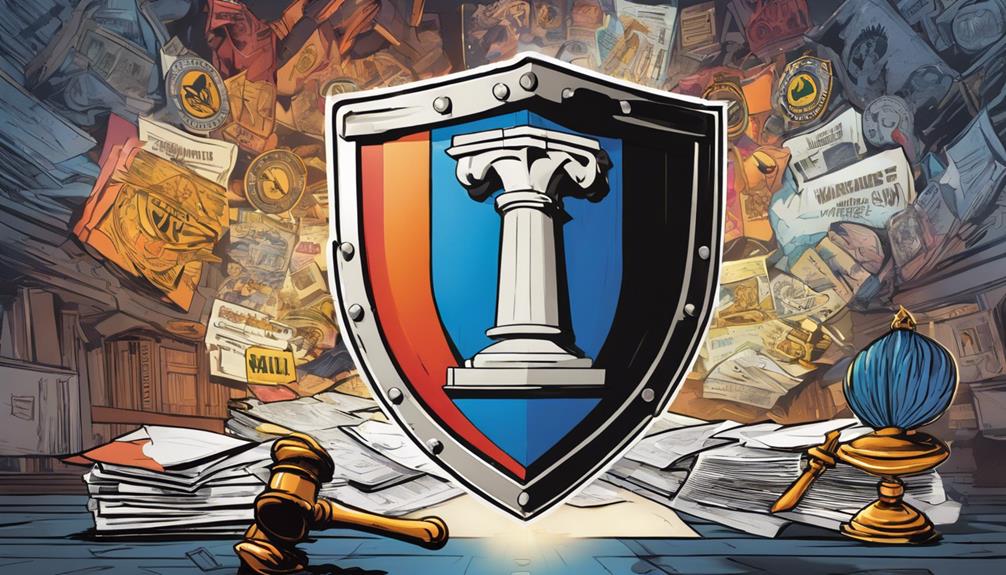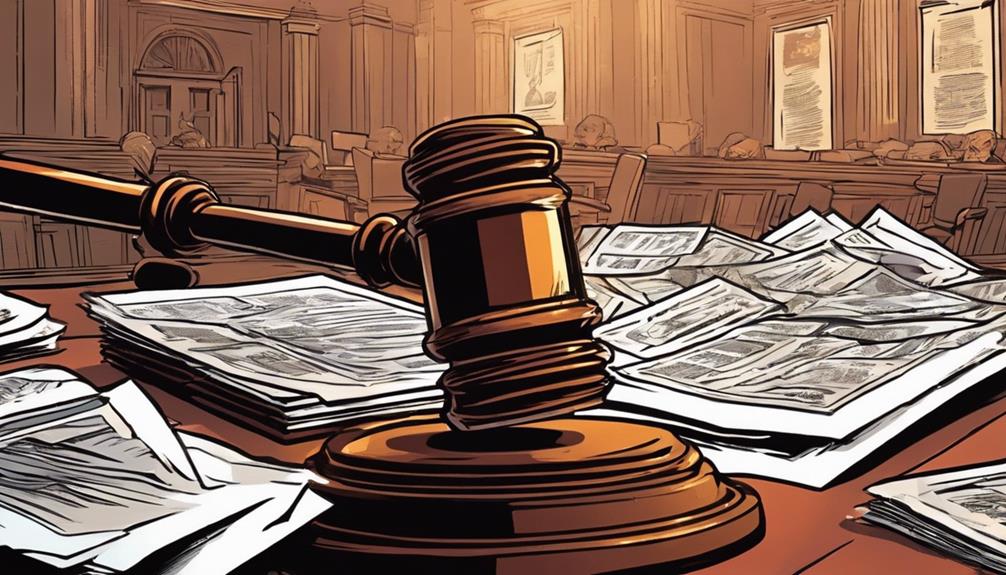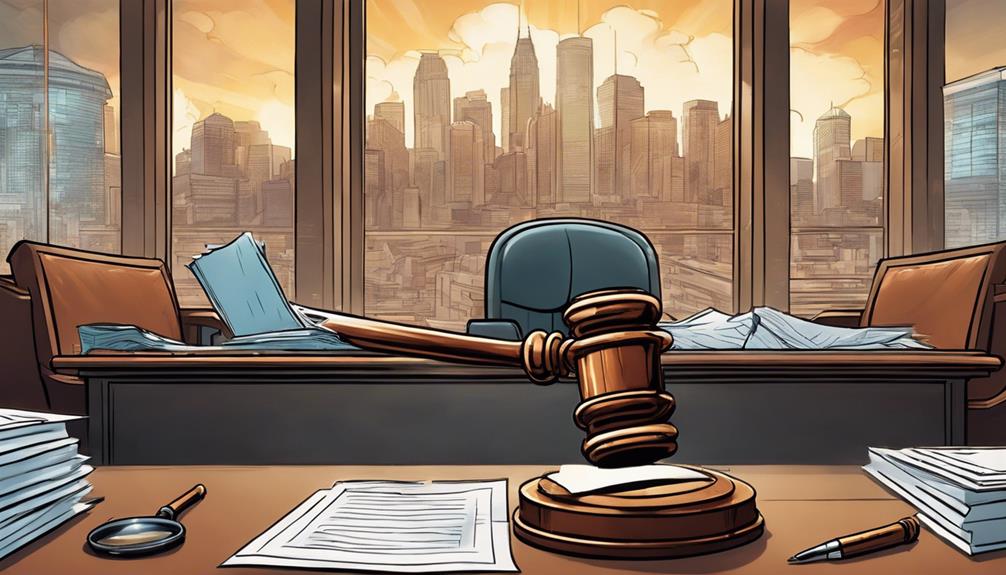Your logo is a crucial element of your brand, and it requires proper protection to guard against misuse. Primarily, trademarks protect logos, preventing unauthorized use. Without federal trademark registration, your logo is vulnerable to being copied and could suffer damage to its reputation. Copyright protection is available, but it mainly covers creative expression rather than brand identity. By securing both trademark and copyright protections, you can strengthen your brand’s credibility and discourage potential theft. To ensure your logo is truly safeguarded, it is essential to grasp these differences and take proactive measures. Continue reading to discover effective strategies for securing your brand’s identity and legacy.
Key Takeaways
- Ensure your logo is registered as a trademark for stronger legal protection against unauthorized use.
- Understand that copyright protects creative works, but trademarks are essential for brand identity protection.
- Regularly monitor the market for potential copycat designs to maintain brand integrity.
- Utilize legal resources to navigate trademark registration and enforce your rights effectively.
Importance of Logo Protection

Your logo is more than just a design; it's the face of your brand and a key element in building your company's reputation.
When you invest time and effort into creating a unique logo, you're establishing a primary identifier that customers will associate with your products or services.
However, the risk of copycat designs looms large, especially in a world where similar design resources are easily accessible.
Malicious intent can also threaten your logo's integrity online, leading to potential theft or misuse.
If someone misappropriates your logo, it can mislead customers and erode their trust in your brand.
Protecting your logo is essential to maintain your brand's uniqueness, value, and overall reputation in a competitive marketplace.
Trademark Vs. Copyright Explained

Understanding the distinction between trademark and copyright is essential for effectively protecting a logo's unique identity. Here's a quick breakdown:
- Trademark: Primarily safeguards logos, brand names, and symbols from unauthorized use. It establishes your brand's identity in the marketplace.
- Copyright: Protects original creative works like art and literature, but it doesn't cover brand identity. Your logo might be copyrightable if it's an original design.
- Registration: Federally registering a trademark provides stronger legal protection than relying on common law rights, which are limited to local jurisdictions.
Knowing these differences helps you choose the right protection strategy for your logo, ensuring it stands out and remains yours in the competitive landscape.
Don't underestimate the importance of securing both trademark and copyright, where applicable.
Advantages of Logo Copyright

Logo copyright provides essential protection against unauthorized use, guaranteeing your brand's identity remains intact and recognizable across various markets. This protection not only shields your logo from being misrepresented but also supports your brand's reputation. By securing copyright, you maintain consistency and deter potential copycats.
Here's a quick overview of the key advantages of logo copyright:
| Advantage | Description |
|---|---|
| Branding Consistency | Guarantees your logo is consistently recognized. |
| Protection from Misuse | Prevents others from misrepresenting your brand. |
| Legal Ownership | Establishes your rights over the original design. |
| Enhanced Trust | Builds customer trust by maintaining brand integrity. |
Taking these steps helps you safeguard your creative assets effectively.
Key Legal Considerations

Filing with the United States Patent and Trademark Office (USPTO) is essential for securing federal trademark registration and protecting your logo from unauthorized use. Without it, you risk limited common law protection that only covers your immediate area.
Here are three key legal considerations to keep in mind:
- Understand Trademark vs. Copyright: Know that logos are primarily protected under trademark law, not copyright law.
- Know Fair Use Laws: Familiarize yourself with fair use laws, which allow limited use of copyrighted materials, but not trademarked logos.
- Be Aware of Legal Repercussions: Unauthorized use of your trademarked logo can lead to serious legal consequences, so make certain you're proactive about protection.
Taking these steps can safeguard your brand's identity effectively.
Essential Resources for Entrepreneurs

To effectively protect your brand, you can tap into a variety of resources that assist with logo design and copyright registration. Here's a quick guide to help you navigate these resources:
| Resource Type | Description | Useful Links |
|---|---|---|
| Design Platforms | Tools for creating unique logos | Canva, Adobe Illustrator |
| Legal Consultation | Experts to clarify trademark issues | LegalZoom, Rocket Lawyer |
| Educational Material | Guides on brand protection strategies | USPTO, Nolo |
Utilizing these resources not only streamlines your logo creation process but also strengthens your brand's legal standing. Remember, staying informed about your rights and options is key to effective brand protection.
Frequently Asked Questions
Can I Protect My Logo Without Trademark Registration?
You can protect your logo without trademark registration through common law rights, but this only offers limited local protection. For broader security and legal backing, consider filing for a federal trademark to safeguard your brand effectively.
How Long Does Trademark Protection Last?
Trademark protection lasts for ten years, but you can renew it indefinitely. To maintain your rights, guarantee you consistently use your trademark and file for renewal on time, keeping your brand secure from infringement.
What Happens if Someone Infringes My Logo?
If someone infringes your logo, you can pursue legal action to stop them. You'll likely seek damages and an injunction. Acting quickly strengthens your case and helps protect your brand's integrity and reputation.
Can I Change My Logo After Trademarking It?
Yes, you can change your logo after trademarking it. However, you'll need to file a new trademark application for the updated design to guarantee it receives the same legal protections as your original logo.
Do I Need to Renew My Trademark Registration?
Yes, you need to renew your trademark registration periodically to maintain protection. It's essential to keep track of renewal deadlines to avoid losing your rights and guarantee your brand remains safeguarded against infringement.
Can Protecting Your Logo Help in Unlocking Your Invention Dream?
Protecting your logo can indeed help unlock your invention dream. By registering your logo as a trademark, you can establish a unique and recognizable brand identity that sets your invention apart from others. This can enhance your market presence and create opportunities for your invention to thrive.
Conclusion
Protecting your logo is essential for maintaining your brand's identity and integrity.
Imagine launching a successful coffee shop, only to discover a competitor using a nearly identical logo, confusing your customers and diluting your brand. This could've been avoided with proper trademark registration.
By taking proactive steps to secure your logo, you safeguard your hard work and guarantee your brand stands out in a crowded marketplace.
Don't wait—act now to protect what you've built!









